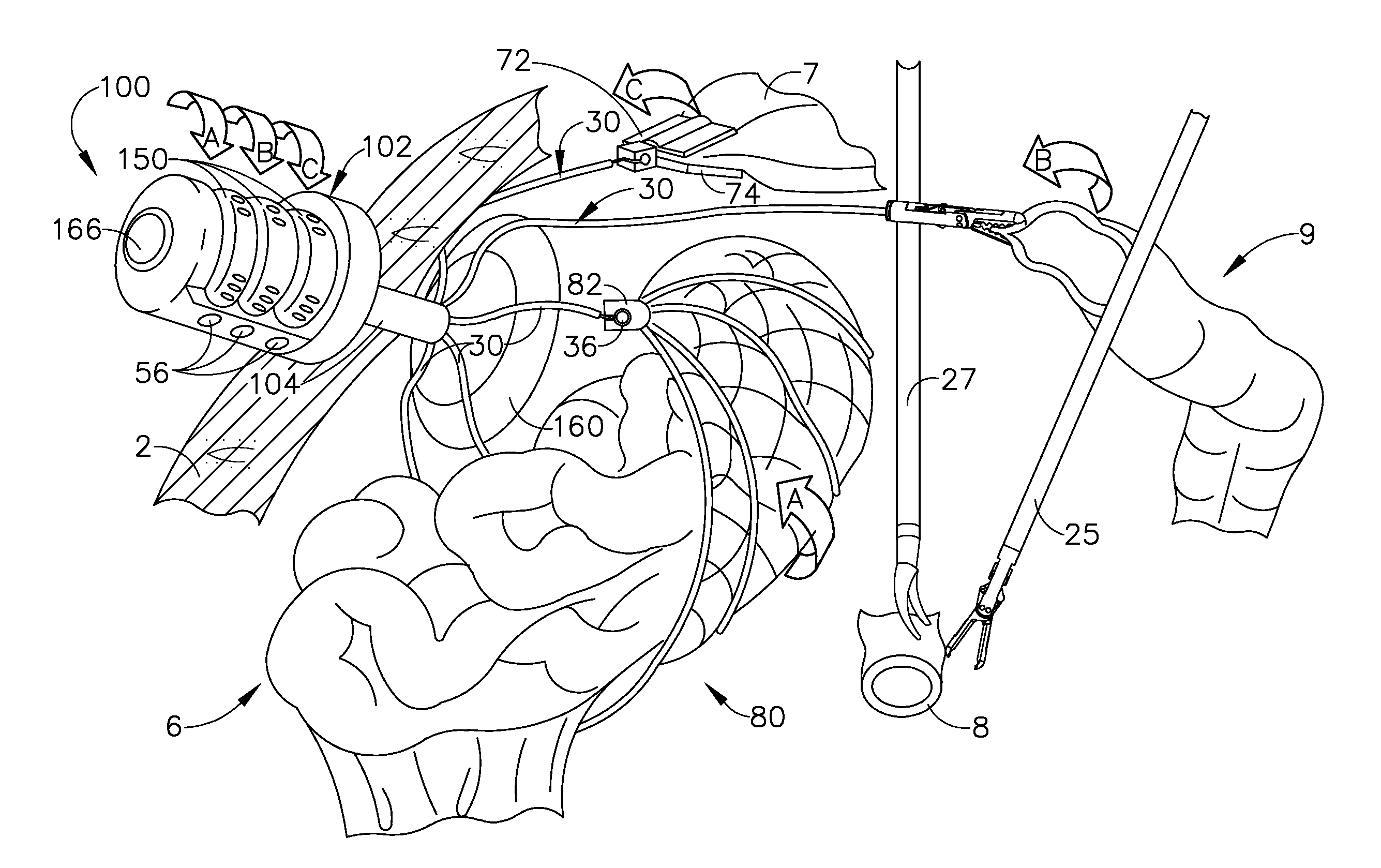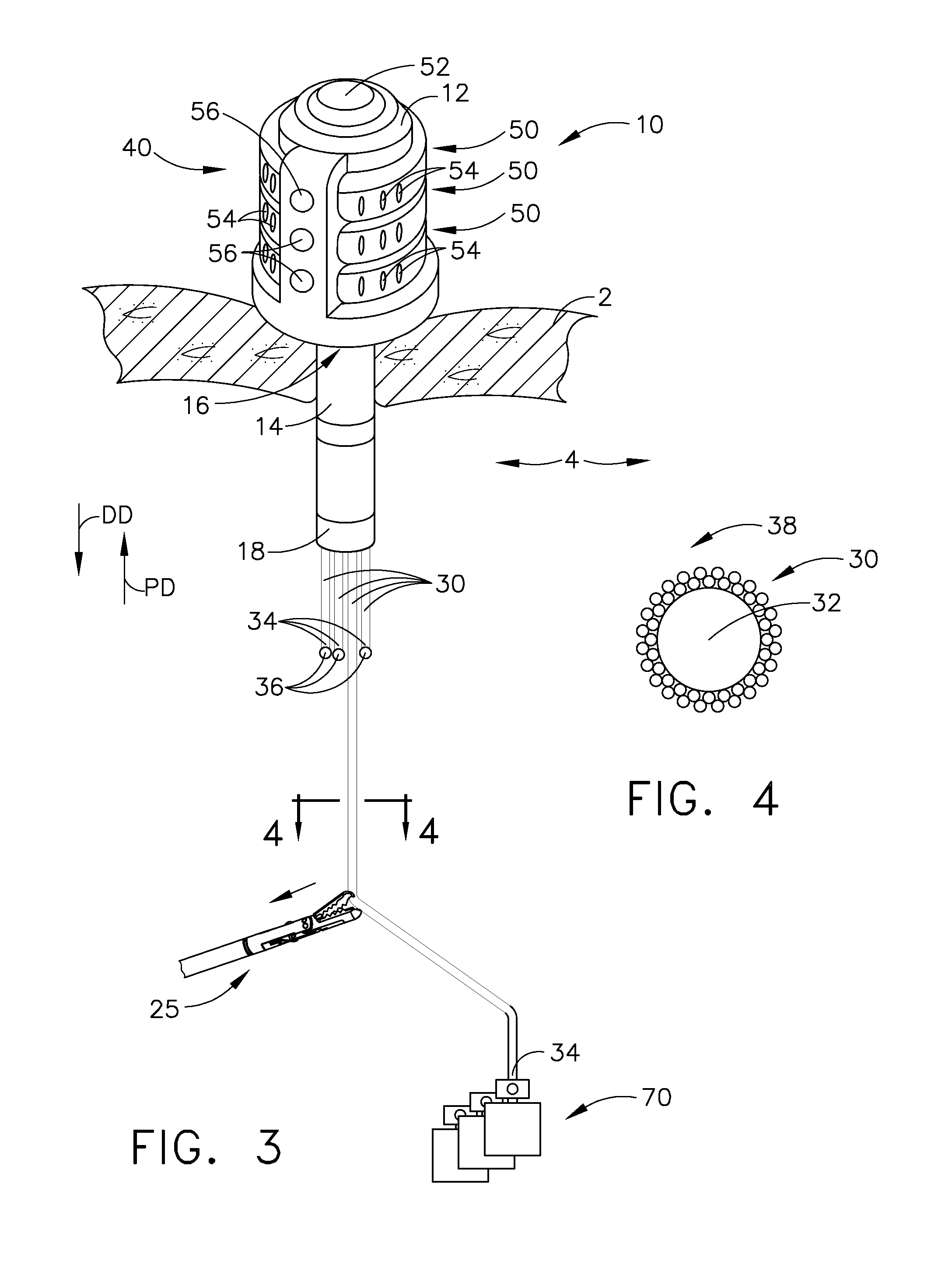Tissue manipulation devices
a technology of tissue manipulation and retraction, which is applied in the field of surgical devices, can solve the problems of difficult, critical and difficult triangulation of the retraction direction, and achieve the effect of improving the accuracy of the retraction
- Summary
- Abstract
- Description
- Claims
- Application Information
AI Technical Summary
Benefits of technology
Problems solved by technology
Method used
Image
Examples
Embodiment Construction
[0037]The assignee of the present application also owns the following applications which were contemporaneously filed herewith and which are each herein incorporated by reference in their respective entireties:[0038]U.S. patent application Ser. No. ______, filed ______, entitled “Multiple Part Anvil Assemblies For Circular Surgical Stapling Devices”, Attorney Docket No. END6926USNP2 / 110014;[0039]U.S. patent application Ser. No. ______, filed ______, entitled “Modular Surgical Tool Systems”, Attorney Docket No. END6921USNP / 110019;[0040]U.S. patent application Ser. No. ______, filed ______, entitled “Specimen Retraction Devices and Methods”, Attorney Docket No. END6930USNP / 110012;[0041]U.S. patent application Ser. No. ______, filed ______, entitled “Modular Occlusion and Tissue Acquisition Mechanisms For Circular Stapling Devices”, Attorney Docket No. END6932USNP / 110010;[0042]U.S. patent application Ser. No. ______, filed ______, entitled “Collapsible Anvil Plate Assemblies For Circul...
PUM
 Login to View More
Login to View More Abstract
Description
Claims
Application Information
 Login to View More
Login to View More - R&D
- Intellectual Property
- Life Sciences
- Materials
- Tech Scout
- Unparalleled Data Quality
- Higher Quality Content
- 60% Fewer Hallucinations
Browse by: Latest US Patents, China's latest patents, Technical Efficacy Thesaurus, Application Domain, Technology Topic, Popular Technical Reports.
© 2025 PatSnap. All rights reserved.Legal|Privacy policy|Modern Slavery Act Transparency Statement|Sitemap|About US| Contact US: help@patsnap.com



